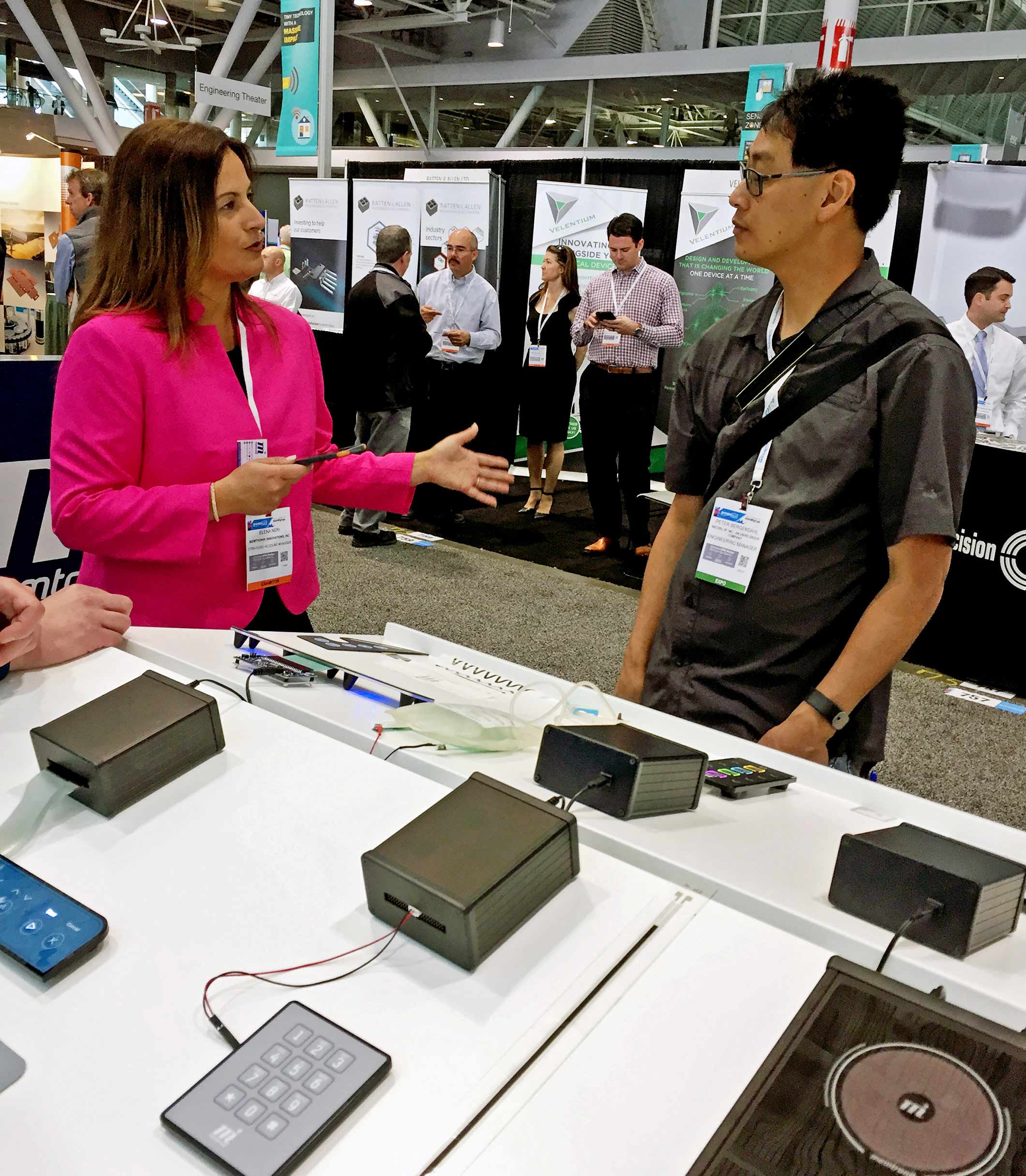On May 15 and 16, our experts attended the BIOMEDevice expo, an important event for the medical technology industry.
Alongside 3,000 other professionals and 375 exhibitors that packed the Boston Convention & Exhibition Center to the rafters, we took this opportunity to exchange ideas with our American colleagues.
The expo, which brings together a vast array of companies from diverse backgrounds, allowed us to take a peek into the future of this industry. Pascal Gauthier, our R&D Director, came away from the event with the following perspective: “When it comes to medical technology, the membrane switch is as popular as ever. In the coming years, this component will continue to be a solid choice thanks to its durability and adaptability.”
Additional reading: The membrane switch: an interface that has proven its worth in the world of medicine
Printed electronics were definitely the stars of the show at BIOMEDevice. Wearable technology and in-mold electronics also showcased their potential! This trend, which we wrote about after returning from LOPEC, is poised to revolutionize the medical and security industries.
Wearable Technology
Used in both clothing and accessories, printed sensors are a solution that should be on your radar.
- Lightweight, thin, and easy to integrate, these sensors have various uses.
- Electrocardiograms and electroencephalograms are used in the medical field to precisely monitor the condition of a patient’s health, among other applications.
- This type of sensor is both wireless and imperceptible while being worn, making hospital visits more comfortable.
Professional athletes quickly took notice of the potential behind wearable technology: many teams have already started using it.
- With the help of sensors that track breathing, heart rate, sweat, and pressure, it is now possible to analyze muscular effort and repetitive movements to prevent injuries.
- As this technology becomes even more refined, sweat analysis may be able to replace blood tests and other sampling methods to measure sodium and other elements.
- Pressure sensors built into clothing or shoes can also provide information to physio or rehab specialists regarding patients’ posture and the mechanics of certain movements.
- Thanks to remote tracking, wearable technology may even be able to reduce the risks associated with various illnesses in the future, helping take some pressure off clinics. But there’s more work to be done before we get to that point!
In-mold electronics
Similarly to in-mold decoration that has facilitated – for almost a decade – the integration of coloured graphic overlays using thermoforming in an injection mold, this technique goes one step further: we now have the ability to insert electronic circuits and LEDs directly into plastic products.
This technology could be used to create a motorcycle helmet, for example, that features a tactile interface like a capacitive switch. The driver could answer the phone or change the volume with a simple tap, without getting distracted. LED integration could also significantly increase their visibility on the road.
- Molded capacitive keyboards are an aesthetic, high-performance solution.
- Waterproof and inlaid using solid plastic, they have no moving parts and enhance the user experience.
- Given that they require no PCP and are very flexible, these keyboards also eliminate many design constraints!
All in all, this event was incredibly eye-opening for our experts, and served as an excellent opportunity to share Memtronik’s innovative technologies with industry leaders in the medical field!
Do you also have an exciting project on your mind? Make an appointment with our specialists!

